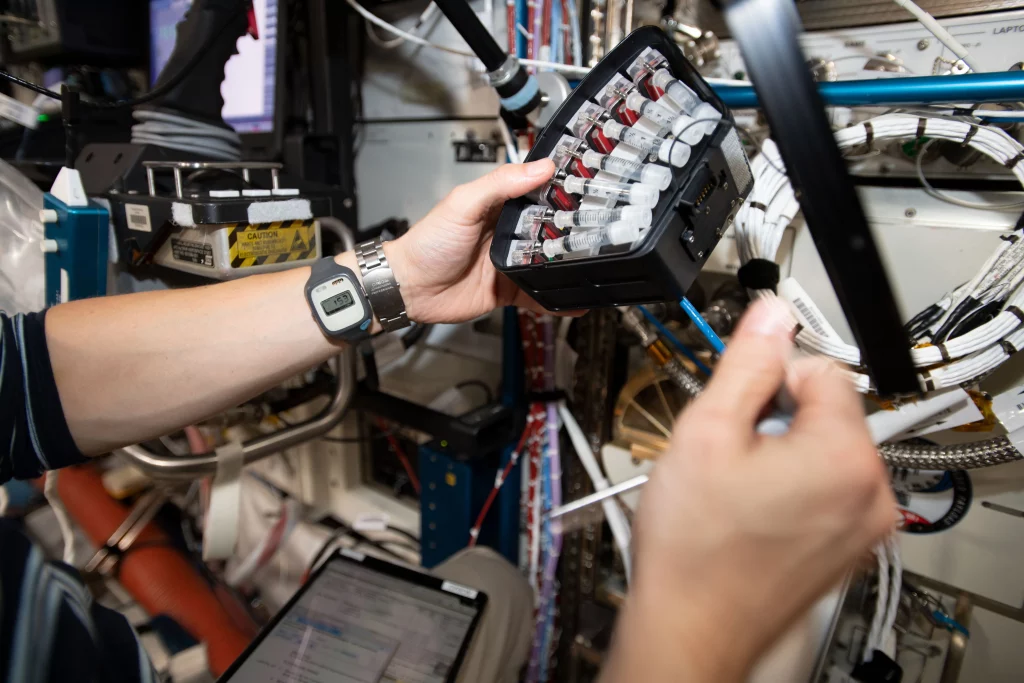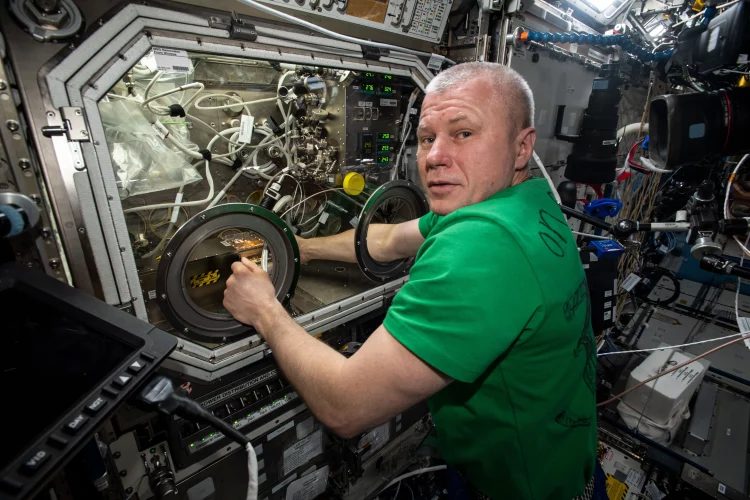Introduction
The International Space Station (ISS) stands as a beacon of human ingenuity and international collaboration, providing a unique laboratory in low Earth orbit for conducting groundbreaking scientific research. Since its inception, the ISS has been instrumental in advancing our understanding of space, Earth, and fundamental science through a myriad of experiments and technology demonstrations. The ISS not only facilitates research in microgravity but also serves as a testing ground for future space missions, offering valuable insights into living and working in space.
On August 9, 2024, the Johnson Space Center released a series of exciting updates from the ISS, showcasing the latest scientific advancements and research achievements. This article delves into the key highlights of these updates, examining the ongoing experiments, technological developments, and their implications for future space exploration and scientific discovery.
Key Scientific Updates from the ISS
1. Breakthrough Research in Fluid Dynamics
Research Overview
Fluid dynamics in microgravity presents unique challenges and opportunities for scientific investigation. Researchers aboard the ISS have been conducting experiments to understand how fluids behave in the absence of gravity, with implications for both space missions and terrestrial applications. Recent studies have focused on the behavior of fluids in porous media, capillary flows, and the mixing of different liquids.
Recent Findings
One of the most significant recent findings involves the behavior of fluids in microgravity, particularly how they interact with porous materials. Researchers have observed that fluids exhibit different capillary effects in microgravity compared to on Earth. These observations are crucial for designing efficient fluid management systems for future space missions and improving our understanding of fluid behavior in various environments.
Applications and Implications
Understanding fluid dynamics in space is essential for developing life support systems, propulsion technologies, and scientific instruments. The insights gained from these experiments will aid in designing more efficient systems for managing fluids in spacecraft, space habitats, and extraterrestrial environments. Additionally, the research has implications for industrial processes on Earth, including oil recovery and water purification.
2. Advancements in Space Medicine and Human Health
Research Overview
Space medicine is a critical field of study that focuses on understanding the effects of space travel on the human body and developing countermeasures to ensure astronaut health and performance. Recent research on the ISS has explored various aspects of space medicine, including muscle and bone loss, cardiovascular health, and psychological well-being.
Recent Findings
Recent studies have provided valuable insights into the mechanisms of muscle and bone loss experienced by astronauts during prolonged space missions. Researchers have identified biomarkers associated with bone density changes and developed potential countermeasures to mitigate these effects. Additionally, advancements in cardiovascular health monitoring have led to the development of new technologies for assessing astronaut heart health.
Applications and Implications
The findings from space medicine research are crucial for ensuring the health and safety of astronauts on long-duration missions, including future missions to Mars and beyond. By developing effective countermeasures and monitoring technologies, scientists can address the challenges associated with extended space travel and improve the overall well-being of astronauts. The research also has implications for addressing health issues on Earth, such as osteoporosis and cardiovascular disease.
3. Exploring the Effects of Space Radiation
Research Overview
Space radiation is a significant concern for long-duration space missions, as exposure to high-energy particles can pose risks to astronaut health and mission success. Recent research on the ISS has focused on understanding the effects of space radiation on biological systems and developing protective measures to mitigate its impact.
Recent Findings
Recent experiments have provided new insights into the effects of space radiation on cellular and molecular levels. Researchers have observed changes in DNA damage, gene expression, and cellular repair mechanisms in response to radiation exposure. These findings are critical for developing effective shielding materials and strategies to protect astronauts from radiation hazards.
Applications and Implications
Understanding space radiation effects is essential for designing protective measures for astronauts and spacecraft. The research will contribute to the development of advanced shielding materials and radiation protection technologies, ensuring the safety and success of future deep space missions. Additionally, the findings have implications for medical research on Earth, including cancer treatment and radiation therapy.
4. Innovations in Space Agriculture
Research Overview
Space agriculture is an emerging field that explores the cultivation of plants in space environments to support long-duration missions and future space colonization efforts. Recent experiments on the ISS have focused on optimizing plant growth, developing new cultivation techniques, and understanding plant responses to space conditions.
Recent Findings
Recent research has led to significant advancements in space agriculture, including the development of new growth chambers and cultivation systems. Scientists have successfully grown a variety of crops in microgravity, including leafy greens, radishes, and herbs. Additionally, researchers have studied plant responses to space conditions, including changes in root growth, nutrient uptake, and stress responses.
Applications and Implications
The advancements in space agriculture are crucial for developing sustainable food production systems for long-duration space missions and future space settlements. By optimizing plant growth and understanding plant responses to space conditions, scientists can ensure a reliable and nutritious food supply for astronauts. The research also has potential applications for improving agricultural practices on Earth, including indoor farming and resource-efficient cultivation techniques.
5. Technological Advancements in Space Robotics
Research Overview
Space robotics plays a crucial role in conducting experiments, maintaining spacecraft, and performing tasks that are challenging or hazardous for human astronauts. Recent updates from the ISS highlight advancements in space robotics, including new robotic systems, software enhancements, and mission applications.
Recent Findings
Recent developments in space robotics include the deployment of advanced robotic systems for conducting scientific experiments and performing maintenance tasks. Innovations in robotic arms, autonomous systems, and artificial intelligence have improved the capabilities and efficiency of space robots. For example, new robotic systems have been designed to handle delicate scientific instruments and perform complex assembly tasks.
Applications and Implications
The advancements in space robotics enhance the efficiency and effectiveness of space missions by enabling precise and reliable operations in challenging environments. These technologies are essential for conducting experiments, repairing spacecraft, and supporting future missions to the Moon, Mars, and beyond. Additionally, the research has implications for robotics applications on Earth, including industrial automation and remote operation.

Collaborative Efforts and International Partnerships
Importance of International Collaboration
The ISS represents a unique example of international collaboration in space exploration and research. The contributions of space agencies from around the world, including NASA, Roscosmos, ESA, JAXA, and CSA, have been instrumental in advancing scientific knowledge and developing new technologies. The collaborative efforts on the ISS demonstrate the value of pooling resources, expertise, and knowledge to achieve common goals.
Recent Collaborative Projects
Recent updates from the ISS highlight several collaborative projects involving international partners. These projects include joint scientific experiments, technology demonstrations, and educational outreach initiatives. For example, recent experiments have involved partnerships with European and Japanese space agencies to study fluid dynamics, space radiation, and space agriculture.
Future Collaborative Opportunities
Looking ahead, there are numerous opportunities for further international collaboration in space research and exploration. Future projects may involve joint missions to the Moon and Mars, collaborative research on advanced space technologies, and shared efforts in addressing global challenges such as climate change and resource management. The continued success of the ISS and future space missions will depend on the ongoing commitment to international cooperation and partnership.
Educational Outreach and Public Engagement
Inspiring the Next Generation
Educational outreach and public engagement are essential components of NASA’s mission to inspire and educate the next generation of scientists, engineers, and space enthusiasts. The ISS serves as a powerful platform for engaging the public and showcasing the wonders of space exploration.
Recent Educational Initiatives
Recent updates from the ISS include several educational initiatives aimed at promoting science, technology, engineering, and mathematics (STEM) education. These initiatives include live broadcasts from the ISS, interactive educational resources, and student research programs. For example, students have had the opportunity to participate in experiments conducted aboard the ISS and learn about space science through virtual tours and educational videos.
Future Outreach Efforts
NASA and its international partners are committed to expanding educational outreach and public engagement efforts in the coming years. Future initiatives may include new educational programs, interactive exhibits, and collaborative projects with schools and community organizations. By inspiring and educating the next generation, NASA aims to foster a continued interest in space exploration and scientific discovery.
Conclusion
The updates from the ISS on August 9, 2024, highlight the ongoing achievements and advancements in space science and technology. From breakthrough research in fluid dynamics and space medicine to innovations in space agriculture and robotics, the ISS continues to push the boundaries of scientific knowledge and technological capability.
The collaborative efforts of international space agencies and the commitment to educational outreach further underscore the importance of global cooperation and public engagement in space exploration. As we look to the future, the research and discoveries made aboard the ISS will pave the way for new missions, technological advancements, and scientific breakthroughs.
NASA’s dedication to advancing space science and technology, combined with the support of its international partners, ensures that the ISS will remain at the forefront of human space exploration and scientific discovery. The ongoing research and achievements on the ISS not only contribute to our understanding of space and the universe but also have far-reaching implications for technology, medicine, and education on Earth.


















































Discussion about this post